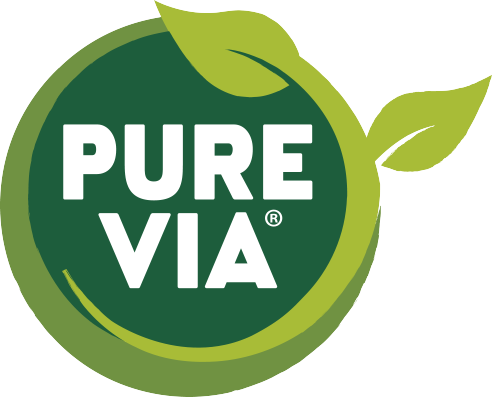Stevia History
Stevia is a member of the Chrysanthemum plant family. For centuries, the Guarani natives of South America have used the leaves of this amazing plant to sweeten herbal teas naturally.
Take a look at the rich history of stevia below. Learn how the zero calorie, all natural sweetness of stevia can make Pure Via a perfectly natural part of your healthy lifestyle today.
Over the centuries, Guarani people of Paraguay and Brazil discover the unique flavor of stevia
Called “Ka’a He’e” (“Sweet Herb”) in Guarani, the indigenous language of Paraguay and parts of Brazil, the stevia leaf was an important ingredient in the indigenous diet.
Stevia was used in traditional cultural drinks
Stevia leaves were used to sweeten the ancient herbal tea “Yerba Mate”.
1800s: Introduced to settlers in the region
Stevia consumption was widely popular in South America, not just in Paraguay but also neighboring Brazil and Argentina.
1887: Modern Discovery by Dr Moises Santiago Bertoni
Bertoni learns of stevia from Indian guides while exploring Paraguay’s eastern forests.
Early 1900s: Stevia’s sweetening qualities first described in botanical journal by Bertoni
Bertoni wrote “A fragment of the leaf only a few square millimeters in size suffices to keep the mouth sweet for an hour, a few small leaves are sufficient to sweeten a strong cup of coffee or tea”.
By 1908 the first cultivated crop of stevia was harvested
Knowledge and use of stevia had spread widely – and many people were now farming stevia throughout the region.
1931: Two French chemists isolate Stevioside leading way to production
French chemists Briedel and Lavieille isolated the glycosides that give stevia its sweet taste. These compounds were named Stevioside and Rebaudioside.
1970s: Japan begins stevia cultivation
In the early 1970s, stevia cultivation in Japan began as an alternative to artificial sweeteners.
Growth in Japan
Since Japan produced the first commercial stevia sweetener in 1971, the Japanese have been using stevia in a variety of food products from soft drinks to pickles. Stevioside has been approved and widely used in Japan for over 30 years.
1990s: Cultivation throughout the world
Not limited to Japan, today, stevia is grown in countries outside of South America including China, India and South Korea.
Stevia’s benefits raise its popularity among health conscious
Stevia has won special interest from diabetics, persons with hyperglycemia and overweight persons.
Stevia the natural sweetener
Today, stevia can be found as a natural sugar substitute. Pure Via®, made with no artificial ingredients is even sweeter than sugar but without all the calories. Pure Via® is ideal for people who want to maintain a healthy lifestyle and is safe for diabetics.
Facts and dates from “The Stevia Story: A tale of incredible sweetness & intrigue.” Copyright, 2000 by Donna Gates

